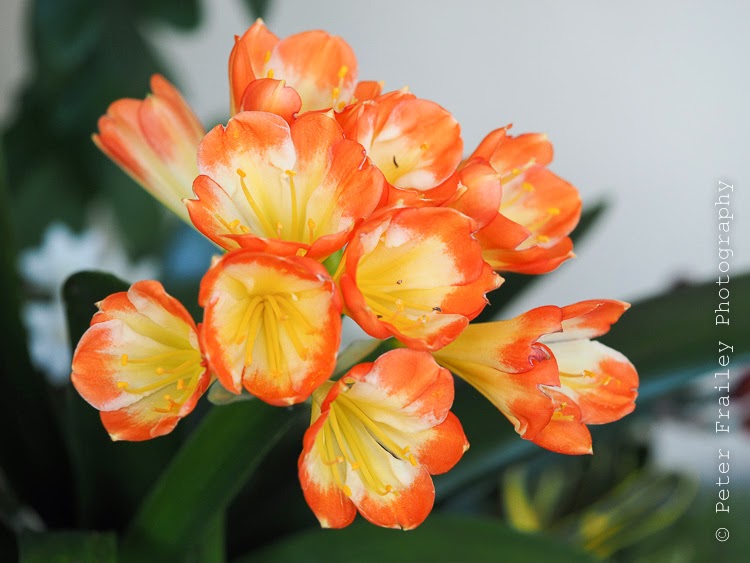In the past I have concentrated on using ambient light only and narrow apertures for good depth of field. More recently (last year) I began adding fill-flash to improve the quality and direction of the light. And during this recent trip I decided I would use primarily a narrow depth of field approach. Shooting wide open means F2.8 on the Olympus 60mm macro lens. The reason for this, is that indoor flowers are hard to isolate from the background, and backgrounds indoors are annoyingly distracting. The narrow depth of field blurs the background, but also causes much of the flower to be blurry as well.
At F2.8, having enough natural light was never a problem. But the light was pretty harsh, as it was a blue sky day without any clouds to diffuse the light.
I set up my camera as follows:
1. Center weighted metering.
2. Single shot auto focus.
3. Spot focusing using smallest focusing appoints.
4. Aperture priority with aperature set at F2.8.
5. EV compensation set at minus 1.
Then, to determine my exposure I simply adjusted ISO until the shutter speed was 1/200 sec or faster. I realize with image stabilization I might have been able to hold this lens/camera combination steady at perhaps 1/60th, but in this setting there is moving air indoors due to large fans overhead. 1/200sec is my "safe" shutter speed for this lens.
The purpose of the minus 1 EV compensation was to underexpose the natural light by 1-stop. Another way to look at this is that I cut the natural light coming into the camera by 1/2. (The flash was manually to provide the other 1/2.)
All these images were taken at speed of 1/200sec to 1/2,000sec. ISO ranges from 100 to 800.
Sometimes I should have paid more attention to what I was doing. One image is 1/800sec and ISO800. Had I noticed this I would have reset the ISO to 200 thereby dropping the speed to my minum required 1/200sec. On the other hand, I'm not so sure that I notice a difference in image quality between ISO200 and ISO800 on the Olympus E-M1.
I set up my flash as follows:
1. I used a Metz 50; but at such close quarters
any flash with a flexible head will do just fine.
2. I tilted the head as much as 90 degrees to the left or right,
to provide fill-flash from the side.
(If natural light was coming from above and to the left,
I would tilt the head to the right and perhaps horizontally
to provide fill flash into areas with the darkest shadows.)
3. I used the Through The Lens (TTL) setting and HSS (high speed sync).
Even with TTL, I was making Flash Exposure Compensation (FEC)
with each flower or different angles.
(Another approach would be to use Manual settings.
The Metz setting range from full power
all the way down to 1/128th power.)
After taking a picture, I always check the histogram to be sure of the exposure is correct. Fortunately, flowers don't move much so after reviewing your first shot you can go back to the flash and adjust FEC up or down.
I'm not saying the pictures below are portfolio shots. Far from it. But I do like the fact that the exposures are good and there are really no signs of a fill-flash being used. And that was my objective... other than spending an hour or so in a beautiful place.
Larger images can be found on my Web site, here:
http://www.peterfraileyphoto.com/p450183122
My favorite is #1.










